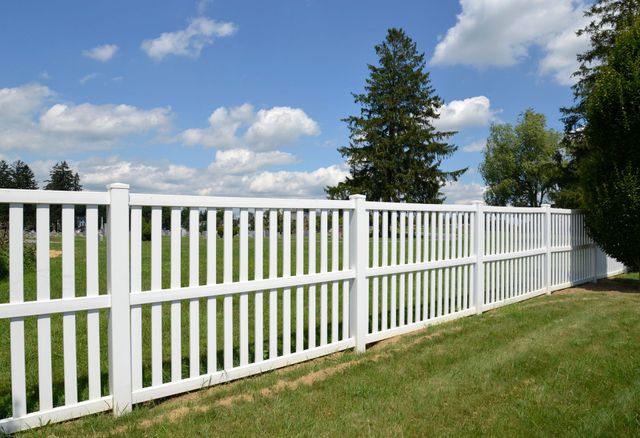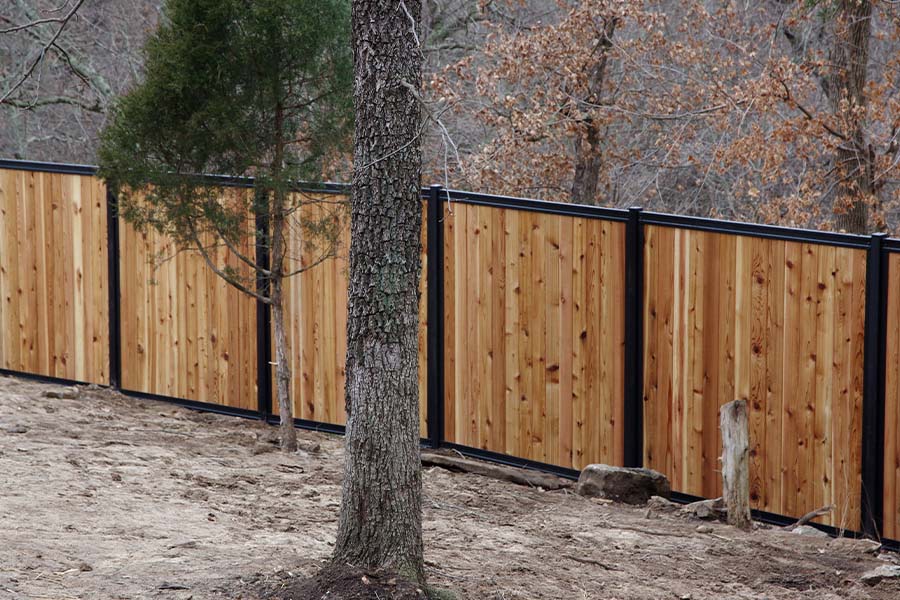All Categories
Featured

Fences are an essential part of any type of residential or business property, offering personal privacy, safety and security, and visual charm. Nonetheless, like all outdoor frameworks, they need normal maintenance to preserve their stability and appearance. Whether your fencing is constructed from timber, vinyl, chain link, or metal, complying with a couple of basic maintenance methods can ensure that it continues to be in excellent condition for years to come. Below are some valuable pointers to keep your fence looking fantastic and carrying out well.
- Carry Out Routine Examinations. Consistently examining your fencing is critical to determining problems before they end up being significant problems. Every few months, walk your building and examine the fencing for visible damages. Try To Find:
Absent or loose panels or boards: Whether it's vinyl, timber, or metal, check for any kind of loose sections that may need to be reattached or changed. Rust or corrosion: Steel fencings, consisting of chain web link or functioned iron, can establish corrosion gradually. Early discovery enables you to tidy and treat the affected locations prior to they spread out. Indicators of rot: Wood fences are specifically susceptible to rot, especially at the base of posts and planks that touch with the ground. Search for soft spots, discoloration, or mold and mildew, which may indicate wetness damage. Security of blog posts: Over time, fencing messages might become loose or unstable. This can cause leaning sections or even collapse, so make sure that posts are firmly secured in the ground. 2. Tidy the Fence Routinely. Cleansing your fence is one of the most basic and most reliable ways to preserve its problem. Mold, debris, and dirt can gather, creating discoloration and use over time. Here's how to clean up different kinds of fencings:

Wood Fences: Make use of a pressure washing machine or a scrub brush to eliminate dirt and mold and mildew. Be mindful not to utilize too much pressure with a power washer as it might damage the timber. Utilize a wood cleaner or a mild cleaning agent to remove discolorations if necessary. Plastic Fencings: Plastic fences are reasonably reduced upkeep and can be cleaned with soapy water and a soft cloth. Stay clear of rough products or severe chemicals, as they can scrape the surface. Metal Fencings: Light weight aluminum or steel fences can be cleaned up with a soft sponge and soapy water. For rust places, make use of a cord brush or rust eliminator before applying touch-up paint to stop the rust from spreading. Chain Web Link Fences: Just hose down wire mesh fence to eliminate dirt and debris. If plants has grown over the fencing, cut it back to stay clear of unneeded stress on the structure. 3. Deal With Wooden Fences for Security. Wood fencings need additional care because of their vulnerability to weather problems. Wetness from rain, snow, and humidity can trigger wood to rot, warp, or swell. To safeguard your wood fence, think about the complying with:
Seal or Discolor the Timber: Applying a protective sealer or tarnish will certainly help protect the wood and protect it from the components. This will certainly additionally provide the timber a fresh, sleek look. Be certain to reapply the sealer every 2 to 3 years to maintain its safety barrier. Check for Termites: Wooden fences can be vulnerable to termite damages, especially in moist areas. Keep an eye out for signs of infestation, such as small openings, timber dust, or the visibility of the pests themselves. If you locate termites, consult an expert insect control solution to settle the problem. 4. Trim Vegetation Around the Fence. Hedges and plants expanding as well close to your fence can create lasting damages if left unattended. Overgrown origins can press versus fence posts, triggering them to loosen up, and creeping plants can put in pressure on wooden or steel panels, potentially flexing or breaking them. Additionally, plants growing too near to the fence can hold moisture against the surface, which can result in rot or corrosion.

Make it a practice to trim any type of plants, vines, or bushes that might be growing near your fence. This will certainly not just keep the fence better condition yet also improve the general visual appeals of your backyard.
- Address Rust and Rust Quickly. For steel fences, corrosion and corrosion can be a substantial concern if not dealt with quickly. To stop corrosion from spreading:
Clean and Sand Affected Locations: For small rust areas, make use of a cord brush or sandpaper to remove the rust. After cleaning, use a rust-resistant guide and paint to secure the steel from additional rust. Use Rust-Resistant Coatings: Consider applying a rust-resistant finish to your metal fencing to lengthen its life-span. This can aid protect against new rust areas from creating and keep your fence looking great. 6. Preserve and protect Fence Messages. The security of your fence depends greatly on the messages. The whole framework can become endangered if the blog posts are loose or harmed. See to it to inspect the articles on a regular basis to look for indicators of wear, leaning, or instability.
For Wood Messages: Wooden fence articles can rot at the base. It might be needed to replace the article if you observe signs of rot or degeneration. For Steel or Vinyl Posts: Make sure that steel or vinyl posts are securely secured and not bent or broken. Tighten loosened bolts or readjust the placement of the posts to maintain the fencing standing high if needed. Conclusion. Keeping your fence does not have to be a complicated task. With regular cleaning, examinations, and some standard treatment, your fencing can remain a useful and appealing attribute on your property for many years. Whether you have a wood, chain, vinyl, or steel link fence, adhering to these pointers will certainly assist you obtain the most out of your investment while ensuring your fencing remains in fantastic problem, offering the privacy and protection you require.
Latest Posts
Uncover Top Auto Repair Care offered by Montclare Auto Repair – Quality Service Today
Published May 29, 25
1 min read
Join WyHy Federal Credit Union – Smart Money Management for Your Money Goals
Published May 25, 25
1 min read
Uncover Reduce Expenses on Car Maintenance with Montclare Auto Repair’s Special Deals
Published May 23, 25
1 min read
More
Latest Posts
Uncover Top Auto Repair Care offered by Montclare Auto Repair – Quality Service Today
Published May 29, 25
1 min read
Join WyHy Federal Credit Union – Smart Money Management for Your Money Goals
Published May 25, 25
1 min read
Uncover Reduce Expenses on Car Maintenance with Montclare Auto Repair’s Special Deals
Published May 23, 25
1 min read